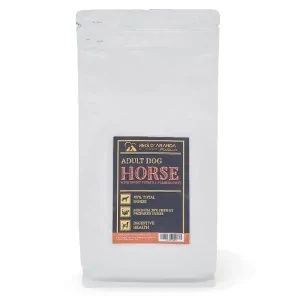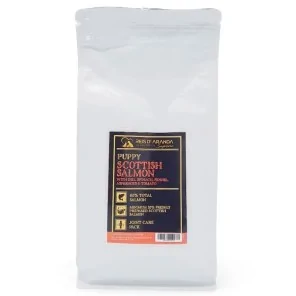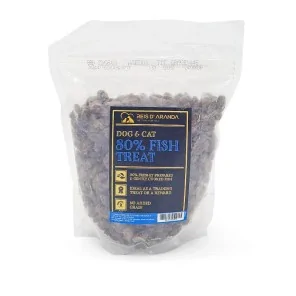The Tornjak originated from genetically homogeneous, almost extinct, indigenous shepherd dogs. These dogs have...
THE ROUGH COLLIE
INTRODUCTION
The rough collie is a well known dog breed since the 1940's and the television series “Lassie”. Representatives of this breed are considered intelligent and friendly.
THE ORIGIN OF THE ROUGH COLLIE
The rough collie belongs to the collie family, which consists of 5 breeds: Rough collie, Smooth collie, Bearded collie, Border collie and Shetland sheepdog. They are all British sheepdogs, which are very different - both in character and morphology - from continental sheepdogs. This distinction is marked by the physical difference in terrain and the different uses to which the dogs were put on the islands and on the mainland: On the islands, vast territories, often far from farms and with few predators; and on the mainland, barren, dry terrain in search of food and water, harassed by predators of all kinds.
It is said that the name collie comes from the English word coal, which indicates the black colour that dominated the first specimens.

(ABOVE: COCKIE: A rough collie of the year 1868)
As can be seen in the photograph of Cockie, the early rough collie bore more resemblance to the border collie than to today's rough collie. It seems that the morphological change in this breed is due to crossbreeding with other breeds. Thus, for example, the Borzoi or Russian Greyhound gave it height, some length to the head; and surely the Irish Setter is the cause of the appearance of the first cinnamon and white rough collie, a colour which, today, is the most abundant and the best known by the public.
The breed has a reputation as an aristocrat because of its relationship with Queen Victoria I of England. In 1860, the Queen toured the Scottish Highlands, where her Balmoral Palace is located. There she met the rough collie that so captivated and delighted her. She immediately took a great interest in this beautiful dog, which was unknown in dog-loving circles, and when she returned from Scotland, she took them with her to incorporate them into her royal kennels. He made them fashionable for their poise, elegance, gentleness and loyalty, and made this breed a favourite with kings and the European nobility.
There is also a variety called Smooth Collie; some breeders' organisations such as the American Kennel Club and the Canadian Kennel Club consider both varieties to be variations of the same breed.
THE ROUGH COLLIE STANDARD
GENERAL APPEARANCE: Appears as a dog of great beauty, standing with an impassive dignity with no part out of proportion to the overall proportions. Physical structure with lines of strength and activity, without being coarse or coarse in features. His expression is most important. This is obtained by a perfect balance and combination of skull and muzzle, size, shape, colour and placement of the eyes, position and correct carriage of the ears.
HEAD: The properties of the head are of great importance and should be considered in proportion to the size of the dog. Viewed from the front or in profile the head resembles a well chiselled blunt wedge with smooth outer lines. The sides taper gradually and smoothly from the ears to the end of the black nose. Seen in profile, the top of the skull and the top of the muzzle form two straight parallel lines of equal length divided by the stop. A midpoint between the inner corner of the eyes (which is the centre of a correctly positioned stop) is the centre of balance in the length of the head. The depth of the skull from the brow to the underside of the jaw should never be excessive.
CRANIAL REGION:
SKULL: Flat.
STOP: Slight but perceptible.
FACIAL REGION:
TRUFA: Always black.
HOCOCO: Smooth finish, well rounded blunt muzzle, never square. Not pointed.
JAWS / TEETH: Jaws strong, lower jaw clearly defined. Teeth of good size. Perfect, complete and regular scissor bite, i.e. upper incisors overlapping the lower incisors in close contact and set square to the jaws.
CHEEKS: Cheek bones not prominent.
EYES: Very important feature giving a soft expression. Medium size (never too small), set somewhat obliquely, almond-shaped and dark brown in colour, except in cases of blue blackbird where the eyes are often (one or both or part of one or both) blue or spotted with blue.
Expression full of intelligence with a quick, alert look when attentive.
EARS: Small, not too close together on top of skull, not too wide apart. At rest the carriage is backward but when alert they are carried forward with a semi erect carriage, i.e. about two thirds of the ear erect and the upper third forward naturally, below the horizontal.
NECK: Muscular, strong, of medium length, well arched.
BODY: Slightly longer compared to height.
BACK: Firm.
LOIN: Slightly elevated.
CHEST: Deep, slightly broad behind shoulders, ribs well sprung.
TAIL: Long reaching at least to hock joint. Carried low when at rest but with a slight upward curve at the end. May be carried gaily when excited but never carried over the back.
LIMBS
FOREQUARTERS:
Shoulders: Sloping and well angulated.
ELBOWS: Never turned in or out.
FOREARMS: Forelegs straight and muscular with moderate bone structure of round bones.
HANDS: Oval, well cushioned pads. Fingers arched and close together.
HIND LIMBS:
THIGH: Muscular.
KNEE: Well angulated.
LEG: Clear and sinewy.
HIP JOINT: Well let down and strong.
FEET: Oval, well cushioned pads. Toes arched and close together. Slightly less arched than the forefeet.
GAIT / MOVEMENT: Distinctive feature of the breed. A correct dog never turns his elbows outwards, moving with comparatively closer together with the front feet. Twisting, crossing or rolling is highly undesirable. Hindquarters from hock joint to ground, seen from behind should be parallel and not too close, seen from the side, movement is smooth. Powerful hindquarters with full drive. A reasonable length of stride is desired and should be light and appear effortless.
Absolute correctness is essential.
COAT
HAIR: Marks the outer line of the body, very profuse. Outer coat straight and harsh to the touch, undercoat soft, plush and very close usually covering the skin. Mane and ruff very abundant, mask and face smooth, ears smooth to the tip but with a little more hair towards the base. Forelegs well covered with long hair, hind legs above the hocks profusely covered with hair but smooth below the hock joint. Hair on tail very abundant.
COLOUR: Sable, sable and white, tricolour and myrtle blue.
All should have typical white Collie markings to a greater or lesser degree.
The following markings are preferable:
- White collar, in whole or in part.
- White chest, limbs and feet.
- White tail tip.
- A white blaze on muzzle or skull or both.
Any white or predominant white is highly undesirable.
SIZE AND WEIGHT:
HEIGHT AT WITHERS
- Males: 56 - 61 cm.
- Bitches: 51 - 56 cm.
FAULTS: Any departure from the foregoing points should be considered a fault and the seriousness with which the fault should be regarded should be in exact proportion to its degree and its effect upon the health and welfare of the dog and its ability to perform its traditional work.
DISQUALIFYING FAULTS:
- Aggressiveness or extreme shyness.
- Any dog showing clear signs of physical or behavioural abnormalities.
- Double merle
- Deafness
- Microphthalmia
- Total or partial blindness
- Any colour not mentioned
N.B.:
- Males should have two apparently normal appearing testicles fully descended into the scrotum.
- Only functionally and clinically healthy dogs of typical breed conformation should be used for breeding.
ROUGH COLLIE HEALTH
The Rough Collie is generally a healthy breed, but there are certain diseases that should be diagnosed by appropriate health testing prior to breeding:
- CEA (Collie Eye Anomaly): Collie Eye Anomaly (CEA) is a congenital and inherited disease. All dogs with CEA have bilateral choroidal hypoplasia (CH), also called chorioretinal dysplasia, a thinning of the vascular tissue at the back of the eye, which does not significantly affect vision. Some dogs also have optic nerve coloboma, a condition in which the nerve tissue is not fully developed in the area where the optic nerve contacts the back of the eye. In a few cases, retinal detachment may also occur. The latter two defects are more serious and can even lead to blindness. CEA is already present at birth and does not progress, so there is no need to worry that an affected puppy will worsen over time. On the other hand, it is worth mentioning that puppies affected with CEA do not suffer any pain.
- PRA (Progressive Retinal Atrophy): There are two types of photoreceptor neurons in the retina: rods (located more on the periphery of the retina) and cones (located closer to the centre). These photoreceptors gradually deteriorate so that the retina is no longer able to capture light and, as it is unable to send information to the brain, the animal gradually stops seeing. On many occasions, it is difficult to detect and the owner does not realise until the disease is very advanced.
- RETINOPATHY: Retinopathy encompasses all non-inflammatory diseases affecting the retina. The most common are hypertensive retinopathy, a complication of retinitis pigmentosa and hypertension, and diabetic retinopathy. Diabetic retinopathy is the most common retinopathy, and is mainly a vascular complication of diabetes that affects the eyes of the sufferer.
- CATARACTS: There are several causes of cataract disease in dogs. One of them can be by nature or due to the dog's age, as we have already mentioned above, due to the rupture of the crystalline lens. But there are also other causes of cataracts in dogs, such as trauma, injury, inflammation of the eye or diabetes. However, the most common cause or the one most commonly diagnosed is hereditary cataracts. Age is not a determining factor in this cause as they can appear when the animal is young.
- CD (hip dysplasia): Hip dysplasia is a multigenic and osteoarticular disease that can be hereditary and degenerative. Therefore, there may be different factors to try to predict whether the disease can be developed or not. It is necessary to bear in mind that, although it may be a hereditary disease, it does not always have to develop as it is possible that the dog will not transmit it to its descendants.
- MDR1: The MDR1 gene is a gene that codes for P-glycoprotein. A mutation in this gene results in the failure to produce this protein, which is necessary for the transport of many drugs through the blood to various organs in the body.
It is responsible for preventing the transport of many drugs across the blood-brain barrier, i.e. it is responsible for limiting the penetration into the brain of a large number of drugs that would be toxic and even fatal if they reached the brain. Therefore, dogs with this mutated gene can allow the passage of certain drugs into the brain which in normal dogs have no harmful effect because they cannot reach the brain, but which in dogs with the mutated gene can reach the brain and cause very serious effects.
As far as the Rough Collie's diet is concerned, the best are lean meats with a good supply of iron to help them recover after the intense exercise that this breed must do every day to be healthy, such as the Reis d'Aranda horse meat feed for adult dogs; we can also opt for cereal-free fish feed, especially for the puppy stage, so that their skin and coat are healthy and shiny.
Brushing should be done daily or at least a couple of times a week, always intensively with an extra-long bristle and a cold ejector to help open the coat. The Rough Collie should be groomed monthly with quality products, very moisturising and volumising.
THE ROUGH COLLIE'S PERSONALITY
In addition to its beauty, the character of the Rough Collie is another aspect that has endeared it to many people. It is an intelligent and docile dog, whose look conveys the tenderness and peace that it really gives to those it considers its family.
It is a sensitive dog, so it does not respond to mistreatment or verbal aggression. If properly trained, these dogs are excellent companions for the whole family. They will give tenderness and moments of fun, as they love to share with their own.
They are very active, so they require a considerable amount of exercise, walks and sports to keep them active and balanced. They also require a large space in the house where they can move around easily.
Coexistence is not usually a problem with these dogs, as mentioned, they are quite friendly. However, it is important to provide adequate training to strengthen their friendly nature.
If so, he will get along wonderfully with people close to him and also with other animals. Although he has an underdeveloped protective instinct, he is alert to situations he considers risky for himself or his own.
All these qualities have led to this dog being rated as one of the best companion dogs in existence. So if you are looking for a pet, this could be a good choice.
CONCLUSION
A rough collie wants challenges. Nose work, agility or obedience are activities you should consider for your collie. He will do anything for his owner, but you should not always expect peak performance or tireless endurance. The original working instinct of herding dogs has long since disappeared from the breed. The collie lacks the pronounced hunting instinct. The long-haired collie is particularly suitable as a guide dog for the blind or as a watchdog.
As the rough collie is sensitive, consistency and empathy are required when training it. This is an advantage if you already have experience with dogs. In this case a very firm hand is not necessary, as the collie quickly becomes resigned and loses his motivation.
Leave a comment
Log in to post comments
















